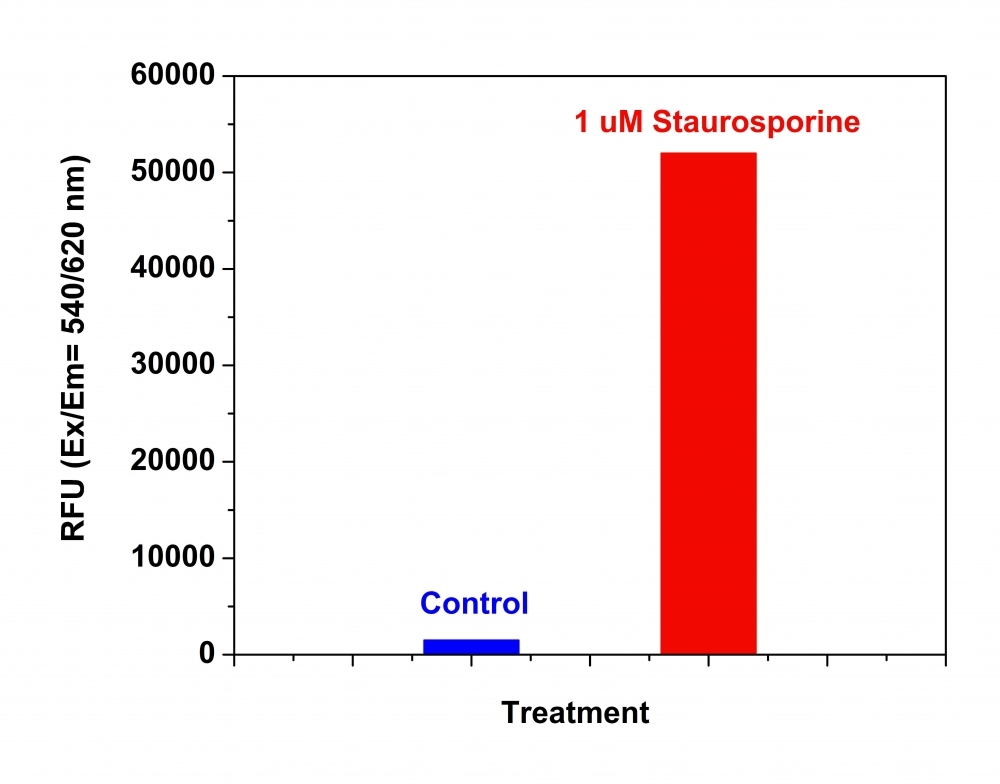Amplite® Fluorimetric Caspase 3/7 Assay Kit
Red Fluorescence
Caspases play important roles in apoptosis and cell signaling. The activation of caspase-3 (CPP32/apopain) is important for the initiation of apoptosis. Caspase 3 is also identified as a drug-screening target. Caspase 3 has substrate selectivity for the peptide sequence Asp-Glu-Val-Asp (DEVD). This Amplite® Caspase-3 Assay Kit uses Z-DEVD-ProRed™ as the fluorogenic indicator for assaying caspase-3 activity. Cleavage of R110 peptides by caspases generates strongly red fluorescent ProRed™ that can be monitored fluorimetrically at ~620 nm with excitation of ~530 nm. Z-DEVD-ProRed™ is recognized as the most sensitive red fluorogenic caspase 3/7 substrate. This kit can be used to continuously measure the activities of caspase-3 in cell extracts and purified enzyme preparations using a fluorescence microplate reader or fluorometer. It can also be used with flow cytometry for analyzing cell apoptosis and the activities of caspases 3 and 7.


| Catalog | Size | Price | Quantity |
|---|---|---|---|
| 13504 | 100 tests | Price |
Spectral properties
| Excitation (nm) | 532 |
| Emission (nm) | 619 |
Storage, safety and handling
| H-phrase | H303, H313, H333 |
| Hazard symbol | XN |
| Intended use | Research Use Only (RUO) |
| R-phrase | R20, R21, R22 |
| UNSPSC | 12352200 |
Instrument settings
| Fluorescence microplate reader | |
| Excitation | 535 nm |
| Emission | 620 nm |
| Cutoff | 610 nm |
| Recommended plate | Solid black |
Documents
Contact us
| Telephone | |
| Fax | |
| sales@aatbio.com | |
| International | See distributors |
| Bulk request | Inquire |
| Custom size | Inquire |
| Technical Support | Contact us |
| Request quotation | Request |
| Purchase order | Send to sales@aatbio.com |
| Shipping | Standard overnight for United States, inquire for international |
Page updated on December 31, 2025

